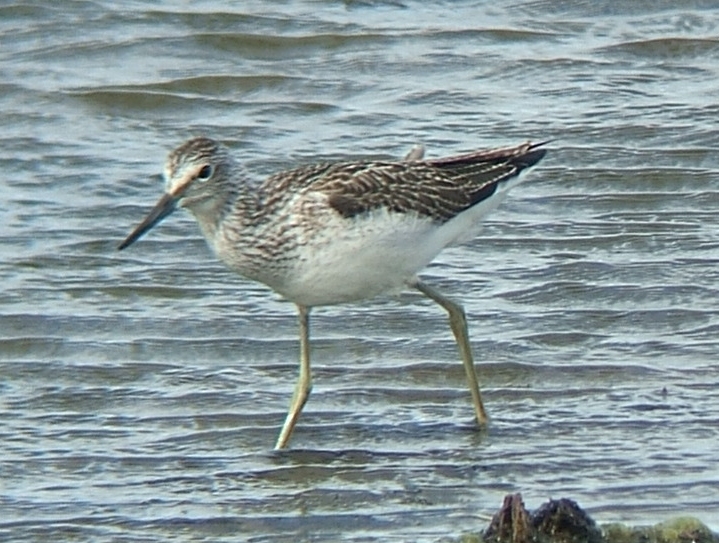- Greenshank
Taxobox
name = Greenshank
status = LC | status_system = IUCN3.1

image_caption = Juvenile Greenshank
regnum =Animal ia
phylum = Chordata
classis = Aves
ordo =Charadriiformes
familia =Scolopacidae
genus = "Tringa "
species = "T. nebularia"
binomial = "Tringa nebularia"
binomial_authority = (Gunnerus, 1767) The Greenshank "Tringa nebularia" is awader in the large family Scolopacidae, the typical waders. Its closest relative is theGreater Yellowlegs , together with which and theSpotted Redshank it forms a close-knit group. Among them, these three species show all the basic leg and foot colours found in theshanks , demonstrating that this character isparaphyletic (Pereira & Baker, 2005). They are also the largest shanks apart from theWillet , which is altogether more robustly built. The Greater Yellowlegs and the Greenshank share a coarse, dark, and fairly crisp breast pattern as well as much black on the shoulders and back in breeding plumage.This is a subarctic bird, breeding from northernScotland eastwards across northernEurope andAsia . It is a migratory species, wintering inAfrica , south Asia, andAustralasia , usually on fresh water. It breeds on dry ground near marshy areas, laying about four eggs in a ground scrape.Greenshanks are brown in breeding plumage, and grey-brown in winter. They have long greenish legs and a long bill with a grey base. They show a white wedge on the back in flight. They are somewhat larger than the related
Common Redshank . The alarm call is a loud trisyllabic whistle.Like most waders, they feed on small invertebrates, but will also take small fish.
The Greenshank is one of the species to which the "Agreement on the Conservation of African-Eurasian Migratory Waterbirds" (
AEWA ) applies.References
* Database entry includes justification for why this species is of least concern
*Pereira, S. L., & Baker, A. J. (2005). Multiple Gene Evidence for Parallel Evolution and Retention of Ancestral Morphological States in the Shanks (Charadriiformes: Scolopacidae). "Condor" 107 (3): 514–526. DOI: 10.1650/0010-5422(2005)107 [0514:MGEFPE] 2.0.CO;2 [http://www.bioone.org/perlserv/?request=get-abstract&issn=0010-5422&volume=107&issue=03&page=0514 HTML abstract]Gallery
External links
* [http://www.sr.se/p2/p2pippi/sounds/pip0302.ram Call of the Greenshank] (Real Audio soundfile from Sveriges Radio P2)
Wikimedia Foundation. 2010.
